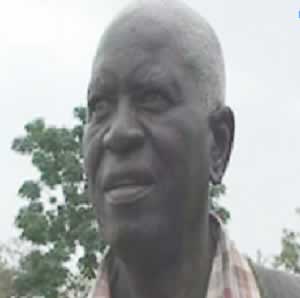NKAYI GREENFIELDS PROJECTS . . . Weaning communities of donor dependence

“The desire is to
explore new ways that can make communities realise that donors need to focus more on addressing root causes of poverty as opposed to addressing mainly symptoms through handouts and social services”
Tapfuma Machakaire
STANFORD Mpofu, a retired school teacher from Nkayi, is well known in his ward and beyond.
Mpofu’s fame rests not only on personal achievement but humility. His esteem was enhanced by the new title of food security champion that he acquired at a community meeting organised by World Vision Zimbabwe, a non governmental organisation operating in the district when the NGO introduced a new development concept known as Greenfields.
Mpofu is part of a team of locals who are now spearheading development programmes in the drought prone Nkayi district under the Greenfields project, a drastic shift from the past development approach, when staff from NGOs were in the driving seat of development projects especially in rural areas.
Prior to the introduction of the new concept, NGOs would not have had any business with the likes of Mpofu and his team, who obviously would not qualify for handouts and would not be allowed to participate in the usually imposed projects.
According to the Greenfields concept document compiled by Method Ndlovu, the Nkayi Greenfields team leader, the new development approach is hinged on three pillars, which are programme effectiveness, donor engagement and organisational effectiveness.
“The desire is to explore new ways that can make communities realise that donors need to focus more on addressing root causes of poverty as opposed to addressing mainly symptoms through handouts and social services” reads the document.
The project began with community preparation meetings that were also attended by traditional and community leaders and representatives of organisations such as farmers, government extension workers, school children and vulnerable groups in the five targeted wards.
At these meetings the Greenfields project was introduced as a project that was about “teaching the communities how to fish and not giving them fish.”
This was followed by the selection of 60 community facilities, two from each of the 30 villages in the five wards.
As a visitor, I was privileged to interact with the community development facilitators and champions at Mathetshaneni primary school near Nkayi business centre, where they had gathered to present reports to officials who had come to learn about the new development concept.
Sipho Bhebhe, one of the community facilitators, said the communities were placed in groups and asked to come up with a selection criterion for the facilitators.
“After we adopted the selection criteria we nominated candidates for the positions and elections were held. The winning candidates were endorsed by the communities.” she said.
With the help of government extension workers, the 60 community facilitators were trained on their new role.
“One of the important things we learnt was that we should take time to listen carefully to the people and work towards helping them achieve their vision,” said Bhebhe.
Another facilitator, Sanele Mpofu of ward 19, said the team was introduced to the plant growth analogy as a community enhancement tool which they used to assess the different stages of development of the communities.
“We then placed the households in categories that we classified as the rich, better, poor and the very poor.”
“We assessed households based on the number of livestock they had, the number of meals the family usually has per day and possession of other assets such as scotch carts and wheelbarrows. From that assessment we realised that only ten percent can be said to be rich, with 30 percent in the better category while the poor constituted 40 percent and very poor 20 percent.”
The communities were ranked in 14 intervention areas that include economic development, literacy, access to primary health care, clean water, child care and protection and gender equity among others.
The community facilitators said they also discovered that the communities in the five wards were ignorant of the concept of emergency relief and disaster mitigation and therefore did not know how to respond to disasters.
Also noted was the inability by the communities to network and create partnerships.
Monitoring and reporting of projects was to be done by the ten champions and project committees while evaluation would be carried out by the communities.
Face Moyo, community facilitator for ward 19, who presented the district profile, said his team had established that there were more than 4,300 households and 29 child headed households. The same area had more than 2,300 orphans and vulnerable children and 867 female headed households.
The comprehensive baseline study by the locals also came up with a list of basic facilities such as schools, health institutions and water sources.
Zenzo Dube said 14 clustered villages regularly met with facilitators and champions and intensively interacted with extension workers over the project proposal documents that were later presented to experts.
Ten Champions were selected from within the community to be in charge of the two areas that were prioritised for programme implementation in the first five years. These were food security, nutrition, water, sanitation and health. The champions would jointly deal with cross cutting issues in the two sectors.
Among the projects identified were capacity building of village health workers, establishment of school and community based health clubs, rehabilitation of ten water points and drilling of 54 new boreholes, training of 104 existing and 54 new water point committees.
The locals also resolved to mobilise resources for management and maintenance of water points, training of 150 latrine builders, both female and male, construction of community latrines and six girl friendly latrines at schools and an additional 10 latrines for disabled pupils at schools. A disaster preparedness plan was also to be set up by the locals under the Greenfields project in Nkayi.
Under advocacy, the team would train child protection committees and child monitors, facilitate birth registration working jointly with child immunisation programme, establish community libraries and establish mothers’ clubs to discourage early marriages and unwanted pregnancies.
Community awareness on disability was to be conducted accompanied by a disability assessment exercise.
Under food security and nutrition, 39 community nutrition gardens were to be established, training of village health workers on growth monitoring and nutrition education would be conducted, household access to small livestock increased and training of community paravets. Ten contract farmers for sorghum, groundnuts and cotton would be linked to buyers.
Method Ndlovu described Greenfields as a learning by doing programme that enabled communities to achieve their desired goals.
“It’s capacity enhancement for communities in specific skills that include leadership and governance, resource mobilisation and management, networking and partnership.”
Ndlovu says programmes would leverage social media to share impact stories with donors, create new products that target new audiences, utilise mobile technology to enable community members to capture photos and videos of the impact from their respective communities.
Candle hubs which are community owned economic hubs would allow communication with donors, development of skills, accessing of information through information communication technology.
Among the guiding principles of the project were that the Greenfield office would be located within the community and furniture would be bought from local carpenters.











Comments